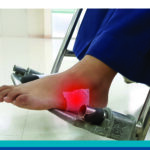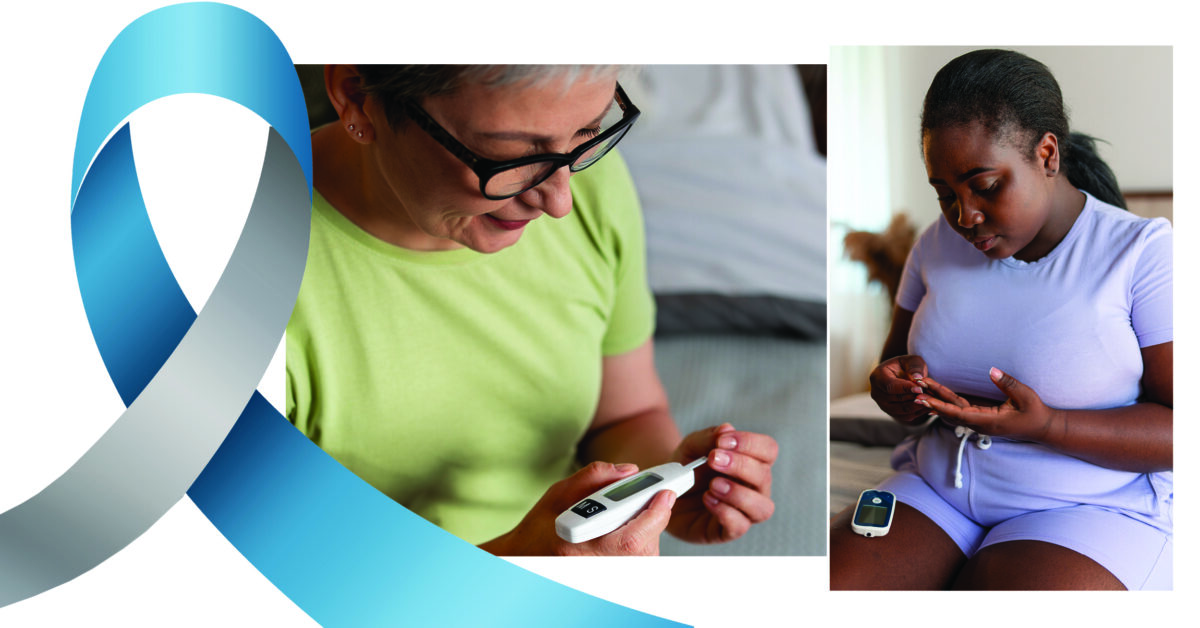
Don’t Want to Cook on the Holiday? SWLA Chefs to your Thanksgiving Rescue!
November 2024
Diabetes and Hard-to-Heal Wounds – Lake Charles Memorial Health System Offers Options
November 2024by Kerry Andersen
The World Health Organization predicts over 300 million people will be diagnosed with type 2 diabetes by 2025. The chronic condition occurs when the body cannot properly regulate blood sugar levels, leading to high glucose in the blood. If left untreated, diabetes can result in serious health complications like heart disease, kidney damage, and nerve problems. Fortunately, understanding your risk and taking early action can significantly reduce the likelihood of developing the condition or help to manage it more effectively.
Understanding Your Risk Factors
The most common types of diabetes are type 1, type 2, and gestational diabetes (which occurs during pregnancy). Type 1 diabetes is typically diagnosed in childhood and is largely genetic, meaning it cannot be prevented. However, type 2 diabetes, which accounts for over 90% of diabetes cases, is linked to lifestyle factors and can often be prevented or delayed.
Several risk factors increase your chances of developing type 2 diabetes:
Family history: Having a parent or sibling with type 2 diabetes.
Age: People over 45 are at higher risk.
Obesity: Excess weight, especially around the abdomen, can lead to insulin resistance.
Sedentary lifestyle: Physical inactivity makes it harder for the body to regulate blood sugar levels.
Unhealthy diet: Diets high in refined sugars, processed foods, and unhealthy fats can raise your risk.
Ethnicity: Some ethnic groups, including African Americans, Hispanics, Native Americans, and Pacific Islanders, are at a higher risk.
Other risk factors include high blood pressure, high cholesterol, and a history of gestational diabetes or polycystic ovary syndrome (PCOS).
Know the Warning Signs
Dawn Hinton, APRN, AGPCNP-Bc with Revitalized Health in Lake Charles says early detection is key to preventing serious complications from diabetes. Symptoms to look for include:
• Blurred vision, dry mouth, and frequent urination.
• Unintentional weight loss alongside increased hunger.
• Nerve pain or poor wound healing.
• Increased facial hair and hair thinning (women), moles, or dark skin patches.
• Infertility.
• Fungal infections.
• Fatigue and irritability.
Preventative Measures
If you’re at risk for type 2 diabetes, adopting healthy habits can significantly reduce your chances of developing the disease. Hinton says educating patients about the importance of preventing or reversing diabetes is crucial. “We teach our patients about moving their bodies, staying strong and lean by lifting weights, adding in moderate intensity aerobic exercise (150 minutes per week), eating a high protein low carbohydrate diet, and optimizing their hormones.”
Conventional Treatment Options
Managing diabetes effectively is the key to preventing complications. Treatment strategy varies depending on whether you have type 1 or type 2 diabetes.
Type 1 Diabetes Treatment: Since type 1 diabetes results from the immune system attacking insulin-producing cells in the pancreas, insulin therapy is essential. People with type 1 diabetes must inject insulin or use an insulin pump to manage blood sugar levels. Frequent monitoring of blood glucose and a healthy diet are crucial.
Type 2 Diabetes Treatment: In early stages, lifestyle changes such as diet and exercise can effectively manage type 2 diabetes. However, over time, medication may be necessary.
Hinton is especially excited about the success she’s seeing in her practice prescribing GLP-1 agonists like Ozempic and Mounjaro to lower blood sugar and reverse insulin resistance. She says, “I’ve seen Hemoglobin A1C levels drop from 8% to less than 6% in the first three months.” She adds, “The average amount of weight loss depends on the specific drug but can typically range from 10-15% body weight loss. GLP’s also help with lowering blood pressure, reduce the risk factors of heart disease and stroke, improve cholesterol, improve fatty liver disease, and reduce inflammation.”
Alternative Treatments
In addition to conventional treatments, Hinton says some people explore alternative therapies to help manage their diabetes. While these should never replace medical treatments, they can be used alongside them:
• Antihyperglycemic medicinal herbs like berberine, fenugreek, and cinnamon may help improve insulin sensitivity or lower blood sugar. Always consult your doctor before trying these as they may interact with medications.
• Acupuncture: Some studies suggest acupuncture may help manage pain and improve insulin sensitivity.
• Mind-Body Practices: Yoga, meditation, and tai chi have been shown to lower levels of stress hormones like cortisol which can increase blood sugar.
• Weight loss surgery.
Whether through conventional medical treatments or in combination with alternative therapies, living a balanced, healthy life with diabetes is entirely possible. Always consult your healthcare provider to create a plan that works best for your individual needs.
Revitalized Health is located at 2002 W. Walnut Street in Lake Charles. Find them online at revitalizedhealth.org, call 337.214.0097, and follow Dawn Hinton on Instagram @dawnhintonnp






